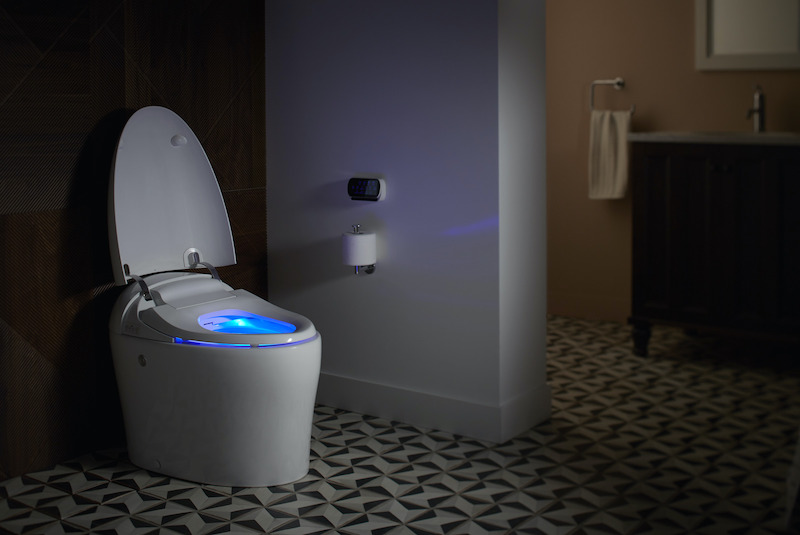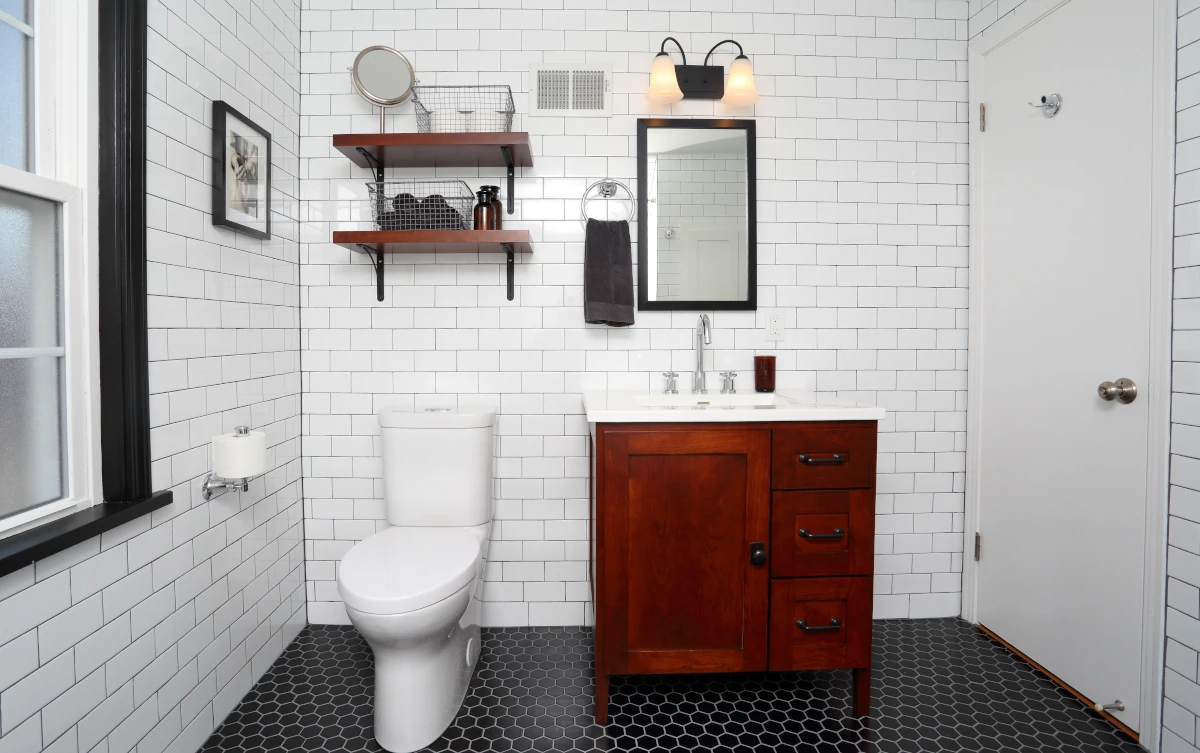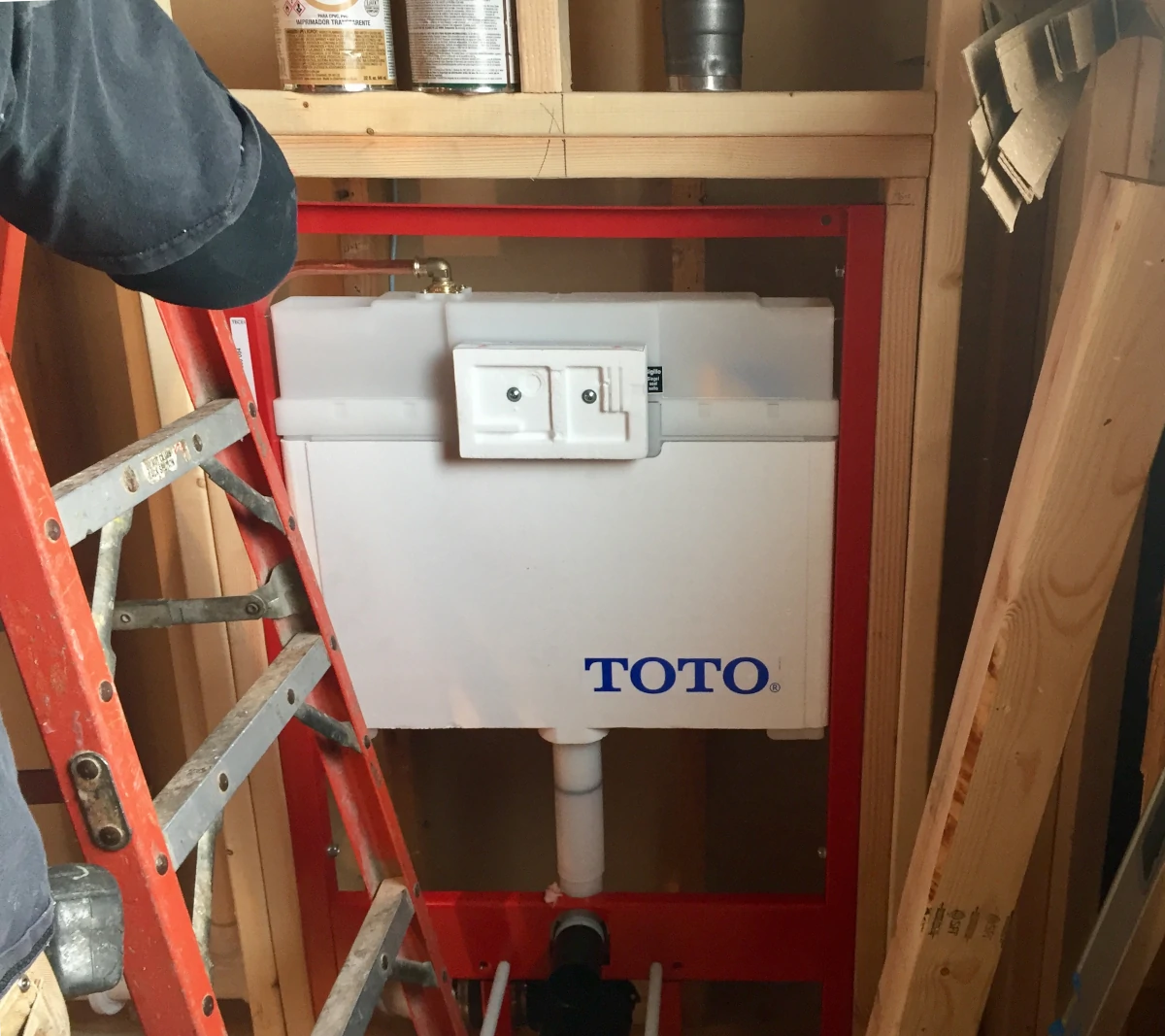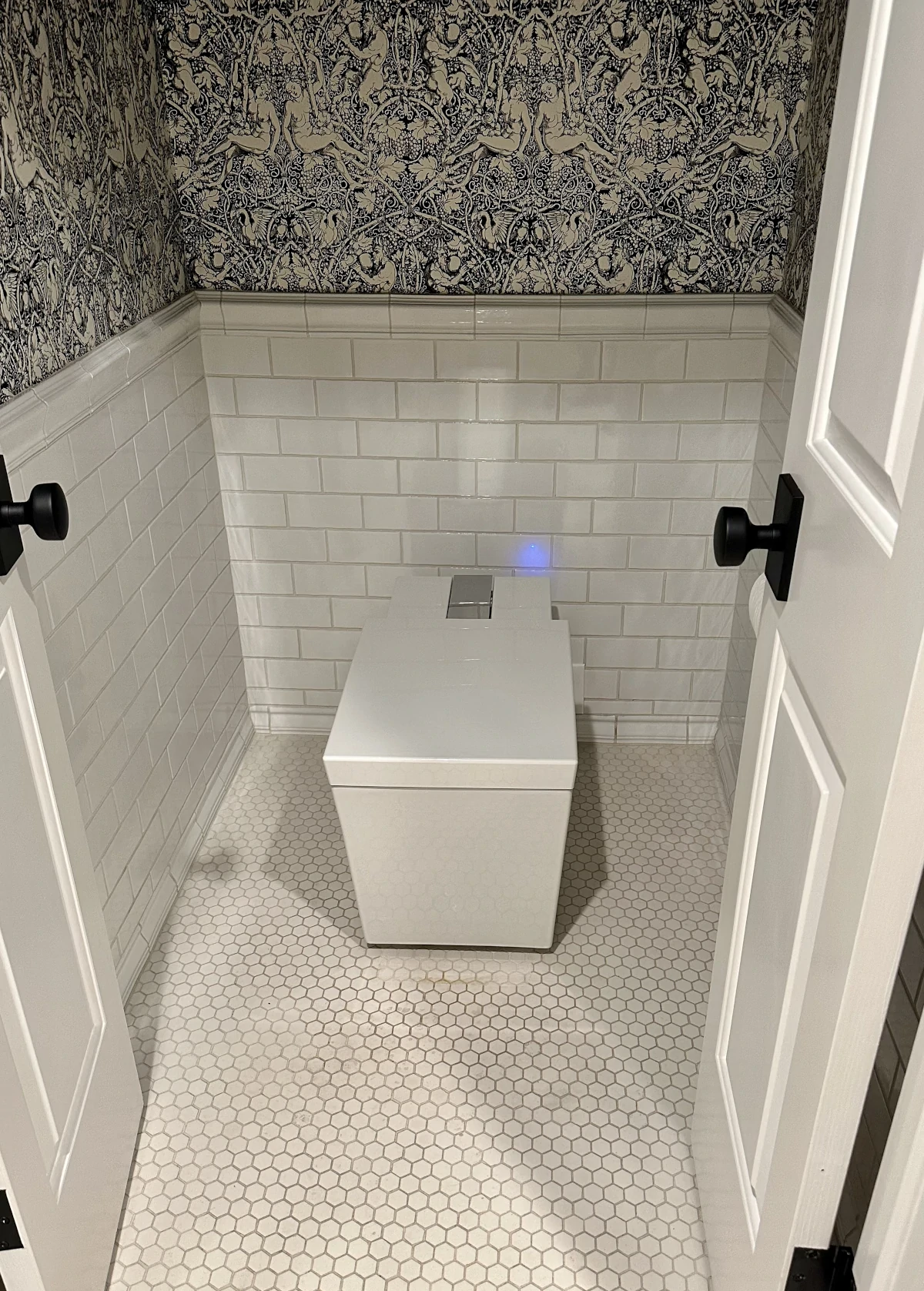As home remodeling contractors, we realize that choosing the right toilet can make or break the function and design of a bathroom remodeling project. The following complete guide to toilets can help you decide which one is right for you.
The toilet and indoor plumbing are taken for granted today, but since its invention in 1596 and widespread adoption in the 1850s, the toilet has changed the way we live.
Biennale curator Rem Koolhaas describes the toilet as “the fundamental zone of interaction—on the most intimate level—between humans and architecture.”
How Does a Toilet Work?
Cast from porcelain and glazed, modern toilets consist of a bowl containing water that helps reduce the smell and lubricates the porcelain surface to help reduce clogs.
When the toilet is flushed, the waste moves through an S-trap, which can often be seen in the casting at the base of toilets.
This S-trap will retain water at the bottom of “S” shape, forming an obstruction that prevents the smell of sewer gas from entering the bathroom.
This is the same principle as the P-trap on your sink or tub.
Complete Guide to Toilets: Types of Toilets
Two-Piece
Two-piece toilets are the most commonly sold toilets that we install in bathroom remodeling projects. They are called two piece because the bowl and tank come in the box in two separate pieces and are joined by a gasket.
These toilets often cost less than their one-piece relatives because they are more common, are easier to cast, and weigh less—usually making them easier to install.
But there are downsides. They are more prone to leaks—between the tank and the bowl—more difficult to clean, and less durable.
One-Piece
In a one-piece toilet, the bowl and tank are molded into a single unit. This integration has produced more sleek and elegant designs compared to traditional two-piece units. Many one-piece models are also more compact.
However, one-piece toilets are more expensive. Also, they ship in larger boxes and are generally more difficult to maneuver during installation.
But in the long term, many people find the higher durability, relative ease of cleaning, and variety of design options of one-piece toilets to be worth the initial inconvenience.
Wall-Hung
In a wall-hung toilet, the tank is installed behind the wall. For this reason, it is most common in new construction or a major renovation.
But it may be worth considering for an existing bathroom remodel if accessibility is a consideration, due to its adjustable height. Or the minimal design and ease of cleaning of a wall-hung toilet may be appealing for some homeowners.
Toilet Bowl Types
Most toilets come in two standard bowl types: round and elongated. Space, users, aesthetic, and personal preference will play a role in which toilet bowl style you select.
Round Bowl
- Round-bowl toilets measure approximately 16.5” from the center of the seat bolt hole to the tip of the bowl.
Our use of round-bowl toilets in our bathroom remodeling projects is usually limited to houses whose in-swinging bathroom door leaves insufficient space for an elongated-bowl toilet. These compact layouts are most common in Whitefish Bay and Shorewood bathrooms.
Elongated Bowl
- Elongated-bowl toilets measure approximately 18.5” from the center of the seat bolt hole to the tip of the bowl.
Elongated-bowl toilets have become more popular with our home remodeling clients than the traditional round bowl, due to their more aesthetically pleasing design.
In addition, the extra two inches of space in the front of an elongated bowl provides more room for men when seated, reducing risk of unhygienic contact with the bowl.
Also, the elongated bowl is preferred for accessibility. The ADA requires them in new and remodeled commercial bathrooms.
Flush Mechanisms
If you’re remodeling your bathroom, it’s essential to know the pros and cons of single-flush—often referred to as regular—versus dual-flush toilets.
They’ve become popular in recent years, and although they’re a green addition to anyone’s home, they may not be the right option for everyone.
Based on the name alone, single-flush toilets may sound more efficient. But dual-flush toilets don’t flush twice; rather, they have two different flush settings.
Single Flush
Single-flush toilets are the most common type in older homes and buildings. They have only one flush mechanism, so all types of waste are flushed with the same amount of water—sometimes as many as 5 gallons.
Dual Flush
Dual-flush toilets have two separate flushing mechanisms—one for liquid waste, which uses much less water than a single-flush toilet, and one for solid waste. The liquid-waste flush uses about 0.8 gallons of water, while the solid-waste flush uses about 1.6 gallons.
Many models have two separate buttons on the top, which can require more force to operate than a lever, presenting accessibility concerns.
But other models have a lever, which may help eliminate accessibility issues. In a dual-flush lever, the user pulls up to expel liquid waste, and pushes down for solid waste.
The unfamiliarity of a dual-flush toilet may create some initial confusion, but when used correctly, this toilet will provide substantial water savings for years to come.
Other Options
Pressure-Assisted Toilet
Pressure-assisted toilets (also sometimes known as “pressure toilets” or “power flush toilets”) are another energy-efficient option for your bathroom remodeling project. The increased efficiency also explains their popularity in public and commercial bathrooms.
With the help of an air valve, water entering the toilet from the mainline is pressurized. With this added boost, a pressure-assisted toilet can empty a 1.6-gallon tank with the force of a 5½-gallon flush.
Other advantages of a pressure-assisted toilet include a more powerful flush that cleans the bowl better, fewer if any clogs thanks to the wider trap, and fewer moving parts to eventually repair or replace.
One potential downside—as you may have noticed in public bathrooms—is the loud flush.
Touchless Flushing
In addition to being more hygienic—no touching a potentially contaminated handle required—touchless flushing is just easier. This is especially valuable for accessibility. Also, you can often Install an automatic flush sensor on an existing toilet.
Finding the Right Toilet for Your Home
We hope that understanding the history, function, and style of toilets has helped you identify which toilet is best for your next bathroom remodeling project.
When you are ready to start your home remodeling project, or if you have any questions that we did not answer about toilets or remodeling in general, we would love to hear from you! Please feel free to contact us at LaBonte Construction.
-

A Kohler Karing toilet with nightlight / Source: Kohler See also: Our post on Smart Toilets: A Glimpse Into The Future.



